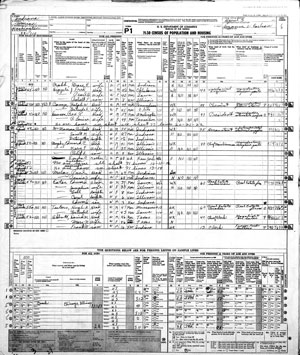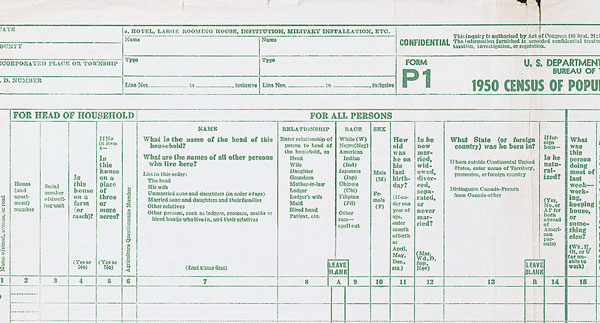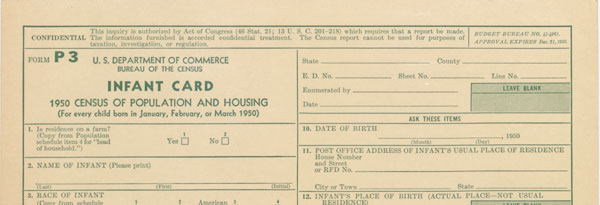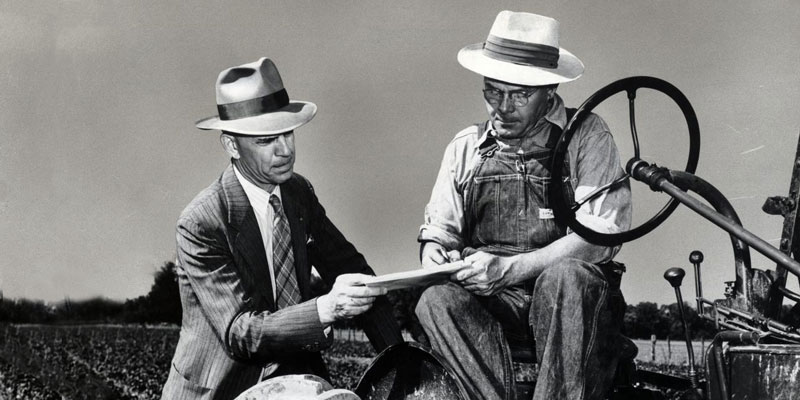
The 72-year wait
Director, Indiana Business Research Center, Indiana University Kelley School of Business
and Governor’s Census Liaison
Seventy-two years. That’s how long individual, identifiable decennial census responses remain secret, according to the federal law (PL 95-416) enacted in 1978 by the 95th Congress. In April 2022, individual responses to the 1950 census became public to much celebration by genealogists and the curious, and perhaps by some with a bit of chagrin. Since April, many of us have dug into those records, thanks to the National Archives free online access, as well as many commercial services such as ancestry.com. For the curious, it is an opportunity to see the records of famous people like Harry Truman or Douglas MacArthur, James Dean or Elvis Presley. And of course, we can search these records as a tangible touchpoint with our elders, to see where our grandparents or great-aunts and great-uncles lived and what their occupations were in that far-off year.
In 1978, it seemed to Congress that 72 years was long enough to wait before unsealing the records. But today, well into the in the 21st century, we are in an age of the long-lived. Our two most recent U.S. presidents were young children when they were documented in the 1950 census. Both Biden (Delaware) and Trump (New York) are documented as living with their parents and siblings and in one case (Trump), a live-in maid. Today, 72 years after the 1950 census was taken, nearly 30 million people (and many active politicians) are alive today who were babies, children or young adults in 1950. Today, they can look back at those records to learn something they might not have know, or to simply feel a connection to people who are no longer with us.
The means of counting
The way that people were counted across the nation relied on a vast army of census enumerators, people who went from house to house, hotel to motel, boarding house to boarding house, and jail to jail. The more than 140,000 enumerators that covered the country were highly trained workers who canvassed entire neighborhoods (or in Census Bureau language, enumeration districts) to ask the head of the household about the people who lived there. (You can see samples of the forms enumerators used toward the bottom of this article.) When the results of the 1950 census were released, it had counted 151 million people in the U.S. and 3.9 million in Indiana. And this was in the time before the nationwide interstate system.
This “schedule” (right) is a good example of one enumerator’s tallying of the people in households in Marion County. A remarkable amount of information was captured on these pages. In this particular schedule for Washington Township, enumeration district 49-110 on Northwood and Englewood streets, we can see there lived a chemist, an accountant, a chief maintenance manager, a clerk and real estate workers. These people were originally born in Indiana, Tennessee, Pennsylvania, Missouri, New York, Texas and other Midwestern states. Reading through this schedule, one can get a sense for that place and time and formulate an idea of how households were formed, who did what for a living, and how many had children. Fortunately, the handwriting of this enumerator was also quite legible.
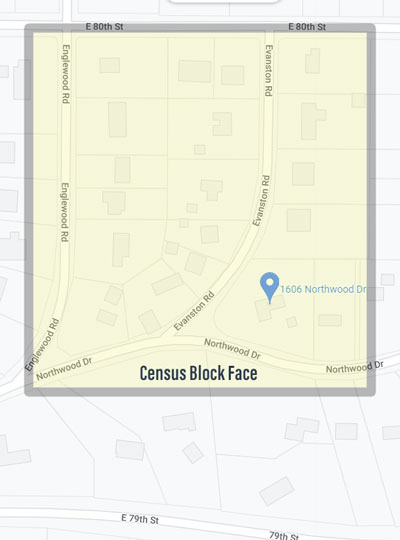
Once you zoom in close enough, you can see that the enumerator, Suzanne V. Carlson, went door to door from Northwood to Englewood to Evanston streets on the north side of Indianapolis and Washington Township. The Google map (on the left) provides a stellar view of what the Census Bureau calls “block faces.”
There were 20 questions on the standard census population form that every household answered, plus an additional set of housing questions and 18 supplemental questions posed to a sample of households. Consider that for 151 million people, the number of responses from the head of the household would be in the billions.
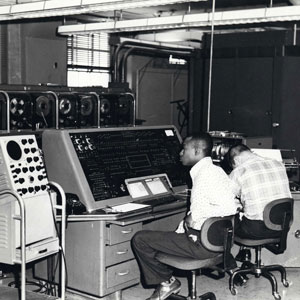
Fortunately, the Census Bureau was able to press the first non-military computer, UNIVAC I, into service processing those responses—by transferring the data from punch cards (a process used for decades) to magnetic computer tape, which allowed UNIVAC to process and tabulate the data for publication.
A particular story of a place and time
The 1950 census counted 151 million people across the United States. Indiana’s results revealed a population of nearly 4 million, constituting 2.6% of America’s population.
The growth during the 1940s was supercharged by a migration of people from other states and countries coming to work in our factories, as well as the beginning years of what was eventually labeled the baby boom (which began in 1946 and lasted through 1964). The boomers dominated everything for a time and it wasn’t until 2015 that baby boomers were outnumbered by the millennials. (See the InContext article “Millennials Outnumber Boomers” for more on generational sizes and shifts in Indiana).
Table 1 summarizes some key statistics from the 1950 census. The terminology used in the statistical publications seems rather quaint and sometimes incomprehensible. One example is showing the numbers of married couples “with own household” or “without own household.” At that time, thousands of married couples lived with parents or in-laws or other family members. Fast-forward to the 2020s and while we have seen a rising trend of young adults continuing to live with parents, or who come back home to live while saving up for their own home or other reasons, the old descriptions of "with" or "without" own household are no longer in use.
Table 1: Highlights from the 1950 census for Indiana
| 1950 | |
|---|---|
| State population | 3,934,224 |
| 10-year growth rate | 14.8% |
| Urban population | 59.9% |
| Rural population | 40.1% |
| Median age | 30.4 |
| Median school years completed (age 25+) | 9.6 |
| Median household income | $2,827 |
| Percent of men in the labor force (age 14+) | 80% |
| Percent of women in the labor force (age 14+) | 28% |
| Married couples with own household | 913,030 |
| Married couples without own household | 48,840 |
Source: U.S. Census Bureau
Incomes in the 1950s will startle most of us, with a median household income of $2,827 (about $31,800 in today's dollars). In fact, 34% of Hoosiers lived on less than $2,000 a year. To help put that in perspective, the average price of a car in 1950 was $984 and a gallon of gas was 27 cents. The median home value in 1950s Indiana was $6,226.
Figure 1 provides a side-by-side comparison of the population in Indiana counties between 1950 and the most recent census (note that additional charts are visible when hovering over a county).
Interactive Figure 1: Then and now: County populations over time
Indiana’s population grew by almost 15% between 1940 and 1950. By way of context, there had been a continual push westward of the U.S. population to and through Indiana since the 1860s, which can be seen by the movement of the center of population from Pike and Highland counties in Ohio in 1860 and 1870, to Boone County, Kentucky in 1880. That center then landed in Indiana for decades, from 1890 through 1940, moving through the counties of Decatur, Bartholomew, Monroe, Owen, Greene and Sullivan counties. For comparison, Indiana grew by just 4.7% between 2010 and 2020 (see Figure 2 for a county-level breakdown).
Interactive Figure 2: Then and now: Growth rates between censuses
Bonus: The data collection forms
Below you can click on and enlarge the paper forms used by enumerators who interviewed and wrote down the responses of the householder during the data collection process.
Learn more
The following sources were either used for the writing of this article or thought to be fun or useful for our readers.
- Public Law 95-416: https://www.congress.gov/95/statute/STATUTE-92/STATUTE-92-Pg915.pdf
- National Archives, Census Records: The 72-year rule: https://prologue.blogs.archives.gov/2022/01/20/census-records-the-72-year-rule/
- NPR, Strange history of the 72-year rule: https://www.npr.org/2022/02/04/1074566938/census-data-72-year-rule-privacy-policy-confidentiality
- U.S. Census Bureau, 1950 Census questionnaire: https://www.census.gov/history/www/through_the_decades/questionnaires/1950_1.html
- U.S. Census Bureau, Overview of the 1950 Census: https://www.census.gov/history/www/through_the_decades/overview/1950.html
- U.S. Census Bureau, UNIVAC I: https://www.census.gov/history/www/innovations/technology/univac_i.html
- Indiana State Library, Back to the Future, 1950s Style: https://blog.library.in.gov/tag/1950-census/
- The Evolution of the American Census by Alec Barrett, published by The Pudding. It combines a timeline with key historical events and the questions that appeared in each census: https://pudding.cool/2020/03/census-history/.
- Indiana Transportation History: https://intransporthistory.home.blog/tag/national-road/


